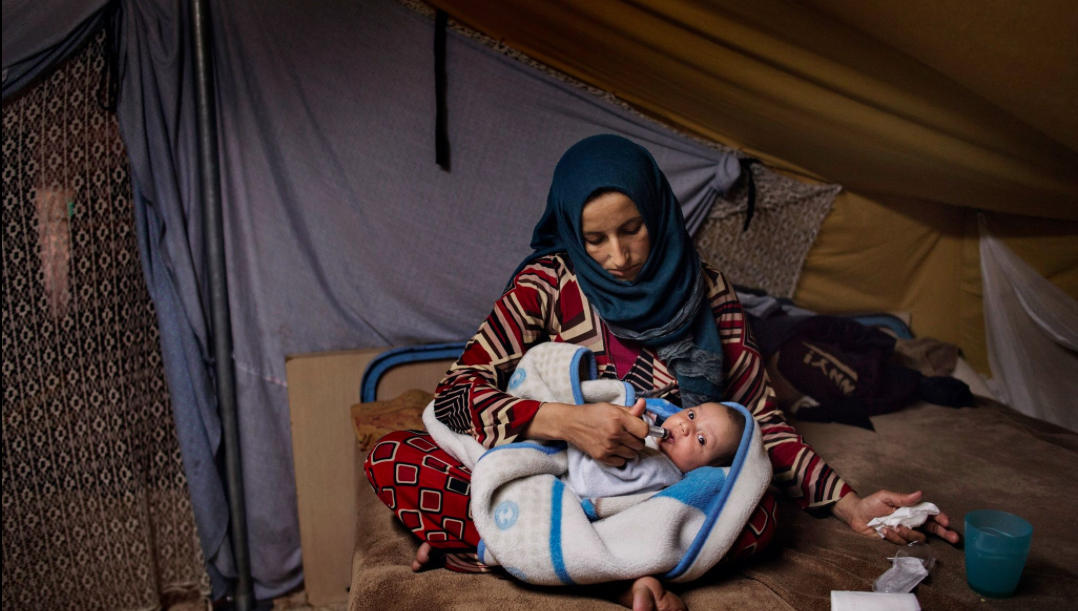On Friday, January 27, 2017, President Donald Trump signed an executive order barring citizens of seven majority-Muslim countries from entering the United States. Within hours, 109 people were either held in detention or deported, and protests were staged at airports in New York, Washington, D.C., Chicago, Seattle, and other major U.S. cities. By Saturday night, a federal judge had ordered a temporary stay on the executive order, which allowed some individuals to be released.
Lost in the reporting on the executive order, however, is a detailed examination of who these individual refugees are, why they’re trying to resettle in the United States, and the conditions they are leaving behind. For the past several years, Pulitzer Center grantees have reported on the refugee crisis, offering portraits of individual refugees as they try to find asylum in the United States, Europe, and Canada. These stories illuminate the lives of people who are now at the center of a contentious political debate on the role of the United States and Europe in providing a haven for people fleeing their home countries.
The Pulitzer Center-published Flight from Syria is a free e-book available for download from Amazon and iTunes and can be read online at Atavist and serves as a primer for understanding the Syrian refugee crisis. Originally published in Al Jazeera, BBC News, Guernica, In These Times, Marketplace, NPR, The Atlantic, and The New York Review of Books, the collected stories tell of an abandoned homeland, an indifferent world, and an uncertain future. They trace the history of one of the biggest displacements of modern times—providing a testament to the suffering and courage of those who fled.
The Pulitzer Center partnered with Time Magazine for “Finding Home,” a year-long series on the lives of four families in the heart of Europe’s refugee crisis. Debuting on the cover of Time’s “Year Ahead” issue, the first installment in the series by photographer Lynsey Addario, international correspondent Aryn Baker and videographer Francesca Trianni, focused on babies born in Europe’s refugee camps. With little documentation, these children are effectively stateless, lacking citizenship in both their host countries and the countries their parents are fleeing. Time has assembled this reporting into a multimedia presentation, with more to come throughout 2017.
Also in Time, grantee Robin Shulman profiled the first Syrian refugee family to arrive in Iowa. Before the war, the Taheem family enjoyed a middle class life of school plays and holiday vacations, but after months of siege and violence, they decided to flee the country. Now living in Des Moines, the Taheems may also be one of the last Syrian refugee families to find a home in the United States. Shulman charts the family’s new life, exploring what their resettlement means both for them and their new community.
Shulman also reported on Canada’s very different response to the migrant crisis. In a feature for Washington Post Magazine, she looked at how Canadians have welcomed Syrian refugees into their country, with groups of citizens — including a dog-walking group, a book club, a choir, officemates and neighborhood block associations — pooling their resources to sponsor Syrian families. In contrast to the Trump administration’s executive order, Canadian Prime Minister Justin Trudeau greeted the first group of Syrian refugees to arrive at the airport.
Jonathan Blitzer reminded us that deportations did not begin with Donald Trump. In an article for The New Yorker earlier this month he reported from El Salvador on the lives of thousands of immigrants deported from the U.S. because of criminal convictions, even in the case of adults who had spent virtually their entire lives in the U.S. and had scant connections to their home countries. Blitzer noted that since President Barack Obama took office, in 2009, the U.S. has deported 2.7 million people, more than during any previous Administration.
Reporting from Greece and Turkey, Jeanne Carstensen produced a series of stories looking at life in Europe's refugee camps. Refugees she met include three Somali journalists marooned on the Greek island of Lesbos, Syrian refugees so disillusioned by living in limbo that they're paying smugglers to return them home, and Yazidis from Iraq who found a less than warm welcome from Muslims in their camp.
The New Yorker recently featured photographer Tomas van Houtryve’s unique approach to covering the migrant crisis. Van Houtryve compiled the social media “digital breadcrumbs” migrants left behind as they passed through Turkey, Greece and France to other points around the world. He then used an augmented reality app to overlay those social media posts on top of video taken from those locations. The resulting work depicts a complicated and engaging document of the refugee experience, showing that migrants’ lives, while often fraught with danger and uncertainty, also contain moments of joy, triumph and grace. Examples of van Houtryve’s work are on The New Yorker website.
For full coverage of refugees and the migrant crisis, visit the Pulitzer Center’s microsite on Population and Migration. The migration/refugee crisis has also been the subject of multiple journalist engagements with students at the Pulitzer Center’s partner schools and universities. Please see our previously published recap on some of these outreach efforts—and also the online Lesson Builder curricula on the Syria e-book and other refugee topics that we’ve created with the help of our educator partners. And finally, for those interested in exploring the roots of today’s refugee crisis, and the U.S. role therein, there is the Pulitzer Center collaboration with The New York Times Magazine on “Fractured Lands,” Scott Anderson’s account of the tragedy of the modern Middle East that took over an entire issue of the magazine last August.
